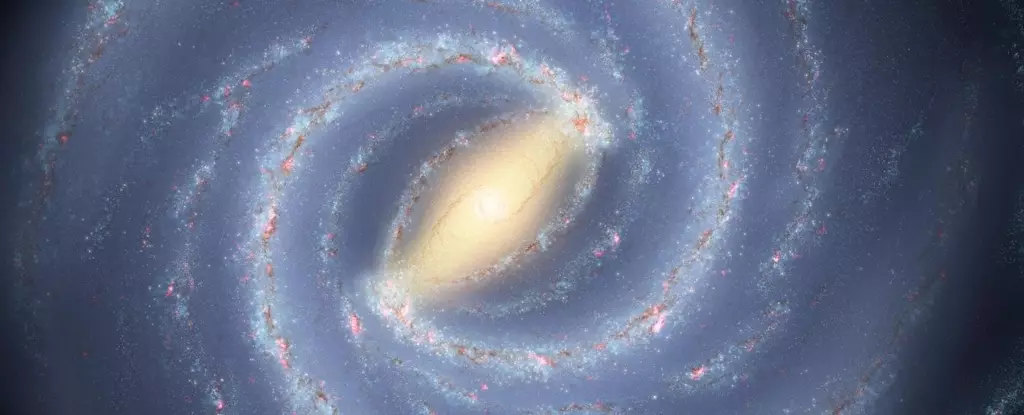Galaxies, those magnificent cosmic structures, have captivated astronomers for centuries. With their various shapes and sizes, they continue to intrigue and astound us. Among these galactic wonders, spiral galaxies stand out with their graceful, swirling arms. Yet, in our corner of the cosmos, these mesmerizing spirals are surprisingly scarce. Scientists have pondered this mystery for decades, seeking an explanation for the scarcity of spiral galaxies in our galactic neighborhood. In a groundbreaking study, researchers utilized a supercomputer to simulate the evolution of our galactic environs, offering a glimpse into the turbulent past that may have shaped our galactic landscape.
The Dominance of Spiral Galaxies
One might assume that spiral galaxies, such as our beloved Milky Way, are a common sight in the vast expanse of the universe. However, it turns out that these galaxies are relatively rare. To understand why, scientists turned back the cosmic clock to approximately 13.8 billion years ago, an era when our galaxy, along with its galactic neighbors, began to take shape. By simulating the evolution of our galactic neighborhood, researchers sought to unravel the secrets behind the scarcity of spiral galaxies.
The simulation conducted by the researchers revealed the existence of a turbulent past. Galaxies residing in densely populated clusters, akin to our Milky Way’s cosmic abode, experienced frequent collisions and mergers. These cataclysmic events, resulting from cosmic bumper cars, can give birth to entirely new types of galaxies. For example, when two spiral galaxies collide, the aftermath typically takes on the form of an elliptical galaxy.
Both observations of our nearby universe and the supercomputer simulations exposed a remarkable revelation. Our galactic neighborhood is teeming with elliptical galaxies, but spiral galaxies appear to be elusive. This finding indicates that our very own Milky Way managed to survive against the odds amid a maelstrom of galactic collisions and mergers. The researchers gained a deep understanding of the transformative processes that occur during galactic mergers, shedding light on the evolution from spirals to ellipticals.
Carlos Frenk, a co-author of the study and affiliated with the Institute for Computational Cosmology at Durham University, expressed the significance of the simulation’s findings. By revealing the intricate details of galaxy formation, including the metamorphosis of spirals into ellipticals through mergers, the simulation takes us one step closer to unraveling the mysteries of the cosmos. Through this newfound knowledge, scientists will continue to expand our understanding of the universe’s grand tapestry.
The scarcity of spiral galaxies in our galactic neighborhood has long perplexed astronomers. Thanks to the advent of supercomputers and their immense processing power, scientists have been able to simulate the evolution of galaxies, providing valuable insights into our cosmic history. The turbulent nature of our galactic environment, characterized by collisions and mergers, has shaped our galaxy into what it is today. As we gaze up at the night sky, we can now appreciate the rarity of spiral galaxies and the resilience of our very own Milky Way. The quest to unlock the secrets of the cosmos continues, as each discovery unveils new wonders and deepens our appreciation for the vastness of the universe.


Leave a Reply